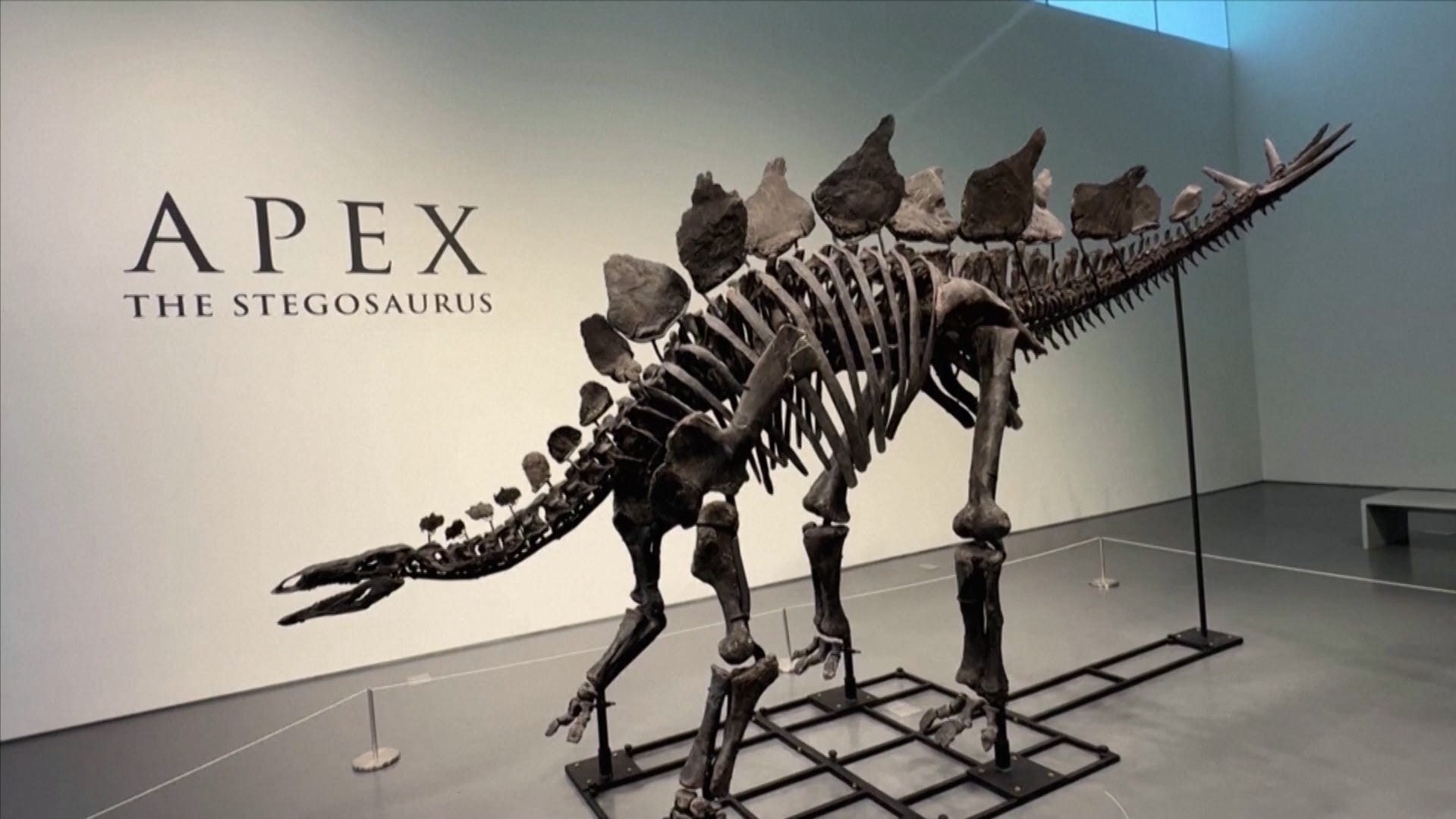Dinosaur fossils like record-breaking Apex 'turn dreams into reality,' museum visitors say

NEW YORK − On a recent rainy Wednesday in Manhattan, Leonid Kogut sat and looked in awe at Apex, a stegosaurus that spans 27 feet. It was the perfect way to spend his afternoon.
From small children to adults, dinosaurs transport us to a time long ago that conquers wonderment in today's world. While Apex just made its debut at the American Museum of Natural History, visitors have long been enamored with the other 100 dinosaurs on the famed fourth floor, which are part of the self-described largest collection of dinosaur fossils in the world.
For Kogut, a 32-year-old social worker who lives in Queens, a museum visit means he gets to be around the ancient skeletons and fossils. He visits the museum about three times a year.
"They're so special because it's like we have the power to turn dreams into reality," he said.
Roger Benson, a paleontologist and the museum's curator-in-charge of fossil amphibians, reptiles, and birds and fossil plants, said people from all walks of life love dinosaurs because they represent something fantastical. No one has ever seen a real-life dinosaur, Benson said, yet we recognize features like the plates along Apex's spine and the formidable spikes on the tip of its tail. For about an hour one recent afternoon, solo adult visitors reacted with childlike glee, snapping selfies in front of the massive bones.
"They're like monsters or dragons, but they're not because they're real animals that lived," Benson told Paste BN. "That's incredible."
Dinosaurs brings out the kid in each of us
Exhibition curators decided to display Apex with its head bowed down, crouching forward, as if it's about to spring forward, museum staff told Paste BN. Visitors can walk around the fossil and look directly into the creature's face, which is at eye level.
That's exactly what Khaled Nasseri did, taking a moment to soak in the 150-million-year-old beast.
“Seeing it like this is something I've never witnessed," Nasseri said, who visited the museum with his young son. "You see replicas, but to see this type of display, it being real, is special."
According to the museum, Apex "is extremely well-preserved," with only 66 bone elements being 3D-printed or sculpted components.
Our understanding of dinosaurs evolves constantly, Benson said, and new fossil discoveries like Apex tell us more about the characteristics of people's favorite prehistoric creatures.
"Adults really love this exhibit," said Melissa Posen, vice president of exhibits at the museum. "They were kids too. We all were kids."
Kogut, who sat for a while admiring Apex, called it "magnificent." He grew up watching "The Land Before Time," and always cried when Littlefoot, a young apatosaurus, is separated from its mother. While a student at Hunter College, Kogut applied for jobs at the American Museum of Natural History just so he could be around the dinosaur exhibits, he said.
"It's not just their size, it's the way they're structured," Kogut said, who never got the chance to turn his dinosaur fascination into a paying gig. "We have other animals, but nothing captures the imagination as much as even these fossilized remains do."
Visitors geek out over nearly complete fossil
Museum patrons at the new exhibit researched ahead of time and said they knew Apex was nearly complete and lived to be an old age.
The specimen includes about 80% of the animal's bones and the rest were recreated for the display, Benson said. Apex is likely the largest stegosaurus ever discovered, researchers announced, and Benson said that of all his research goals, he's most excited to figure out exactly how old it lived to be.
Apex's extremely well-preserved condition and size contributed to its record-setting sale price of $44.6 million in July. Financier Kenneth Griffin, founder of the Citadel hedge fund, bought Apex and is letting the American Museum of Natural History display it for four years. After that, Griffin plans to allow other museums to borrow the 27-foot-long specimen, according to an announcement.
In contrast to their parents' wide-eyed excitement, kids who spoke to Paste BN said they thought Apex actually wasn't big enough − at least compared with some larger species housed elsewhere in the museum.
"This dinosaur, I think it might be too small," said Kian, 3.
Beverly Sonnenborn was with her 4-year-old grandson Jasper, who was itching to see the 122-foot-long Titanosaur in the museum's famed hall of dinosaurs.
"What he said to me is, 'No, I'm looking for the big one, this isn't it,'" Sonnenborn said.
Dinosaurs bring up existential questions
Couples bundled up in coats and winter hats bumped up against strollers in the museum's hall of dinosaurs, many holding up smartphones to take photos of their favorite species, like a triceratops or a Tyrannosaurus rex.
The fourth floor exhibits are among the museum's most-visited, Posen said, because "it's just you and an animal from so long ago."
“The Earth has changed an enormous amount and I’ve seen a lot of changes in my lifetime, it’s just fascinating," Sonnenborn, 81, said.
Nasseri, who brought his 5-year-old son Zain to see Apex, said he hopes the fossil sparks curiosity in the boy.
"It’s hard to believe there was something before us that walked the Earth, and how fragile that could be, since they were wiped out," Nasseri said. “Maybe – or most likely – it’ll happen again. Hopefully not for a very long time though.”